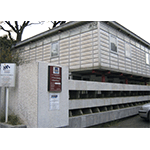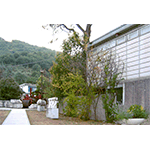Museo Civico del Marmo [Civic Museum of Marble]
Officially founded in 1982 by initiative of the Commune of Carrara, the Museo Civico del Marmo is the city’s first public museum instituted to document and valorise local marble culture. Its foundation was preceded by studies and research promoted by the Town Administration as of 1977, concerning the cataloguing and recovery of the territory’s cultural heritage. The museum is housed in the former headquarters of the Chamber of Commerce of Carrara, which in the Early Seventies hosted the National Exhibition of Marble, and from which the first nucleus of the Museum’s marble collection was born. The museum collection is formed by 310 samples of the most important marbles, granites and ornamental stones of Italy, and by the most significant types of marble and granite currently extracted in the world.
Organised into six sections (Roman Archaeology, History of the Territory, Industrial Archaeology, Technical Applications, Plaster Casts, and Modern Sculpture), the layout presents 114 types of marble quarried in the Apuane Alps, the old topographic maps, drawings and archaeological maps of Luni and its territory, aerial and infrared photographs. Particularly interesting are the reproduction of the Peutingerian Table and the reconstruction in marble of the Salvioni epigraph, the oldest written document in the history of Carrara. The machinery on show includes several noteworthy exhibits: a nineteenth-century wagon of a steam tractor to transport blocks, a wagon of the Marble Railway, one of the first pneumatic hammers and two old screw hoists, one of which dates to the 18th century. An exhibition space inaugurated in 1994 centres on the substitutive restoration project to conduct on the Cathedral of Carrara. The intention is to replace the damaged parts of the structure with philological copies made of marble, moving the original to the museum. Also on display are 25 sculptures belonging to the Commune of Carrara.
Recently a multimedia area was created in order to explain, using new audio-visual and informatic technologies, the many aspects of the millennial culture of marble developed in the Carrara's territory, with particular reference to geological, artistic and social history of the area.
****************************
Texts by Anna Toscano
English translation by Victor Beard
Last update 07/ott/2008





